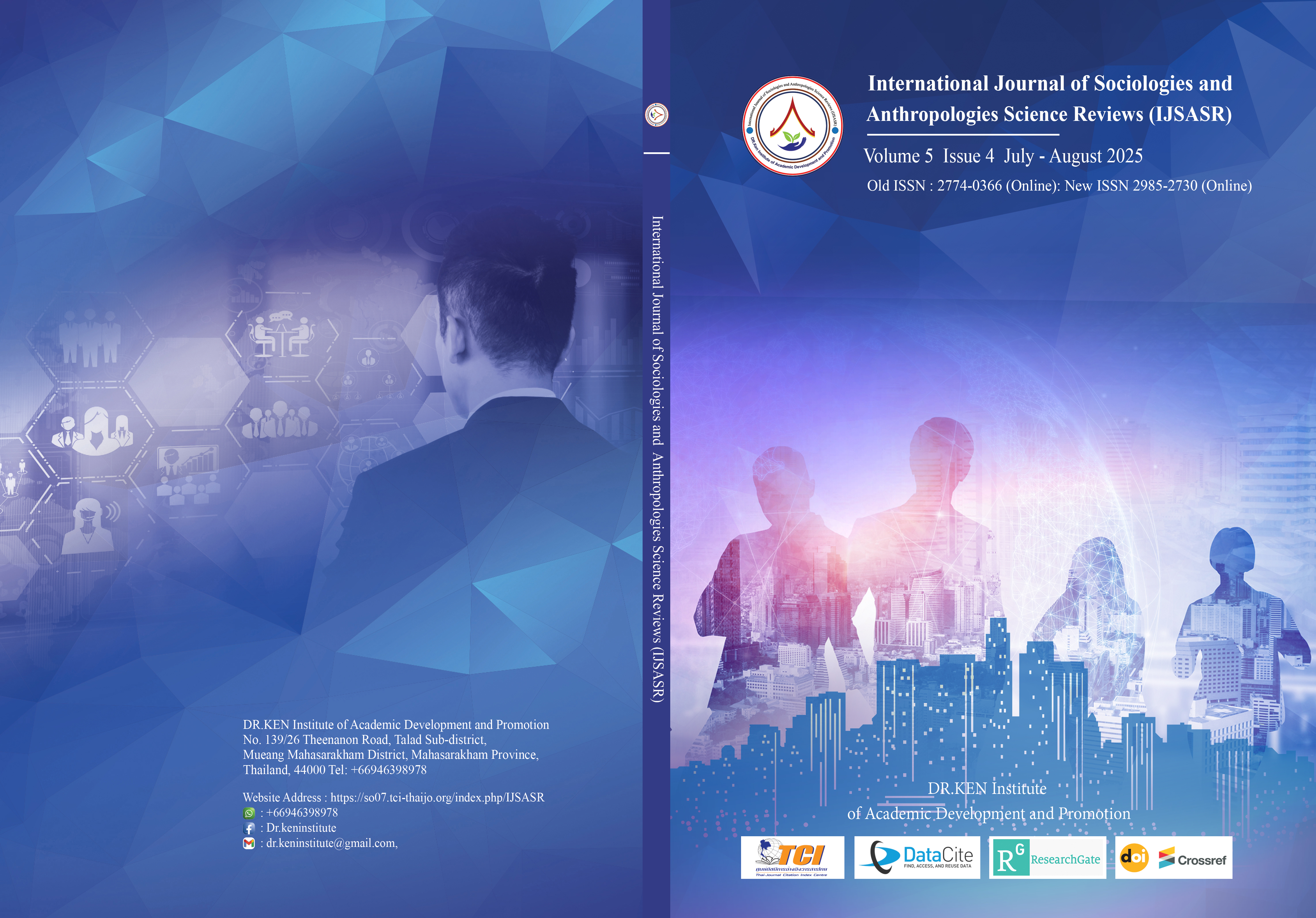Impact of Aerobic Dance Program on Fitness (Endurance, Strength, Flexibility) of College Students
Main Article Content
Abstract
Materials and Methods: This study conducted a 12-week intervention program for aerobics dance after school on 28 college students from the Huadu Campus of Guangdong Vocational College of Foreign Languages and Arts, employing a comprehensive literature review, interview method, experimental method, and T-test data analysis. The subjects of the study were students of the class of 2023; the total number of students in this grade was 780, among whom the physical fitness scores failed to reach 70. Through purposive sampling and calculations using G-Power software to determine the sample size, 28 students (14 of each gender) were selected with an age distribution between 18 and 20 years old. During the course of the study, the students participated in a 12-week aerobics dance training program, three times a week, with each session lasting one hour. Tests included an endurance test (800-metre run for girls and 1000-metre run for boys), a strength test (sit-ups for girls and pull-ups for boys), and a flexibility test (seated forward bends). By comparing the subjects' endurance, strength, and flexibility test results in the first and twelfth weeks of the experiment, this study aimed to assess the effectiveness of aerobic dance exercises in enhancing the physical health of college students.
Results: The 12-week aerobics dance after-school training was shown to improve college students' health-related physical performance. In this paper, the statistical comparison of the pre-test and post-test of the experiment using the T-test showed significant differences. Among them was endurance: boys improved by 0.41 seconds in 1000 m and girls improved by 0.44 seconds in 800 m, P < .001. Strength: boys improved by an average of 3.70 in pull-ups and girls improved by 6.50 in sit-ups, P < .001. Flexibility: boys and girls improved by 5.65 cm in seated forward bend, P < .001. These findings suggest that an aerobics dance after-school training program can promote healthy fitness performance in students.
Conclusion: (1) The effects of cardiorespiratory endurance were significantly greater in college students after a 12-week aerobics after-school exercise intervention. (2) There was a significant increase in muscular strength among college students after a 12-week aerobics after-school exercise intervention. (3) There was a significant increase in the flexibility of college students after a 12-week aerobics after-school exercise intervention.
Article Details

This work is licensed under a Creative Commons Attribution-NonCommercial-NoDerivatives 4.0 International License.
Copyright on any article in the International Journal of Sociologies and Anthropologies Science Reviews is retained by the author(s) under the under the Creative Commons Attribution-NonCommercial-NoDerivatives 4.0 International License. Permission to use text, content, images, etc. of publication. Any user to read, download, copy, distribute, print, search, or link to the full texts of articles, crawl them for indexing, pass them as data to software, or use them for any other lawful purpose. But do not use it for commercial use or with the intent to benefit any business.

References
Department of Physical Education, Health and Art Education. (2021). National research on students’ physical fitness and health. Ministry of Education, China.
Department of Physical Health and Arts Education, Ministry of Education. (2021). Release report of the Eighth National Survey on Student Physical Fitness and Health. Chinese Journal of School Health, 42(9), 1281-1282. doi: 10.16835/j.cnki.1000-9817.2021.09.001
Ghaffari, M., Habibi, A., & Sadeghi, H. (2019). The effects of a 12-week aerobic dance program on cardiovascular endurance and body composition in young adults. Journal of Sports Science and Health, 10(3), 245-252.
Kim, H., & Lee, S. (2020). Aerobic dance as a strategy for improving endurance among sedentary college students: A controlled study. International Journal of Exercise Science, 13(2), 180-190.
Kishon, L., & Hilla, S. B. (2023). Factors associated with musculoskeletal injuries in pre-professional modern dancers before and after the COVID-19 pandemic. Applied Sciences, 13(5), 3018. doi:https://doi.org/10.3390/app13053018
Lee, J., & Park, K. (2020). Flexibility improvements through dynamic aerobic dance routines: A pilot study. Journal of Physical Activity and Health, 17(1), 42-49.
Rasmus, K. H., Jochum, E., Egholm, D., Villumsen, M., & Hirata, R. P. (2024). Moving together - benefits of an online dance program on physical and mental health for older women: An exploratory mixed-method study. BMC Geriatrics, 24, 1-17. doi:https://doi.org/10.1186/s12877-024-04983-6
Santos, M. C., & Monteiro, D. (2018). The role of aerobic dance in improving muscular strength in college students. European Journal of Fitness and Well-Being, 12(4), 301-309.
State Council of the Central Committee of the Communist Party of China. (2019). Promulgation of Opinions on Deepening the Reform of Education and Teaching and Comprehensively Improving the Quality of Compulsory Education. Ministry of Education of the People's Republic of China. http://www.moe.gov.cn/
Suhaya, A. P., Masunah, J., Nugraheni, T., & Dadijono, D. (2024). Traditional dancesport: A process of physical innovation in the frame of the aesthetic movement. Les Ulis: EDP Sciences. doi:https://doi.org/10.1051/shsconf/ 202419701002
Xu, Y. M. (2013). Fitness assessment and development. Beijing: Beijing Sport University Press.






